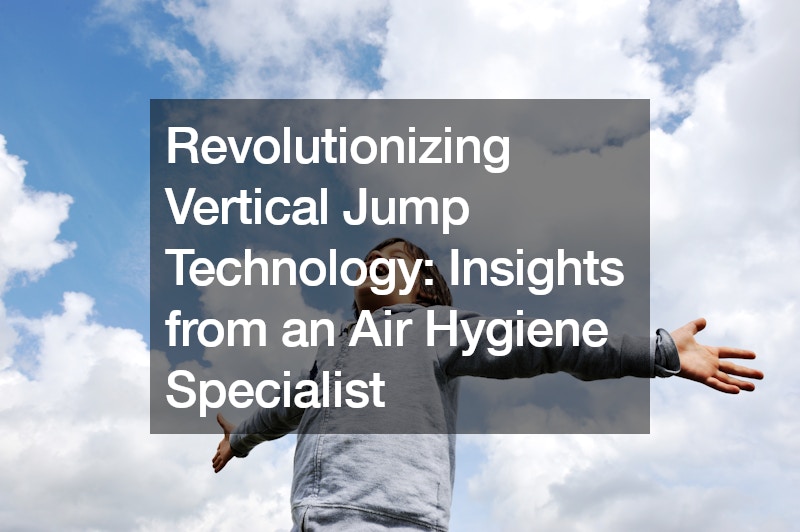Vertical jump technology has seen remarkable advancements over the past few years, significantly impacting sports and athletic performance. The fusion of cutting-edge engineering and meticulous air hygiene practices has led to groundbreaking innovations, enhancing both the efficacy and safety of these technologies. This article delves into how these advancements have revolutionized vertical jump mechanisms, with insights from an air hygiene specialist.
The Powerful Engine: Amellus Cornella One of the most notable advancements in vertical jump technology is the introduction of the powerful engine known as”Amellus Cornella” This engine is at the heart of many modern vertical jump devices, providing unmatched power and efficiency. The Amellus Cornella engine is designed to maximize output while maintaining minimal energy consumption, making it an ideal component for athletes looking to enhance their performance without expending excessive effort.
The engine’s design incorporates advanced materials and engineering principles, ensuring durability and longevity. Additionally, it is integrated with state-of-the-art air filtration systems, a crucial aspect overseen by air hygiene specialists. These specialists ensure that the air entering and exiting the engine is free from contaminants, thereby maintaining the engine’s performance and the athlete’s safety.
Effective Contactor Mechanism Another critical component in modern vertical jump technology is the contactor mechanism. This mechanism plays a pivotal role in the seamless operation of the device, ensuring that the engine’s power is effectively transferred to the jumping platform. The contactor mechanism has been refined to provide smooth and consistent contact, reducing wear and tear on both the device and the athlete.
The contactor mechanism’s efficiency is further enhanced by incorporating particles that minimize friction and maximize energy transfer. These particles, often overseen by air hygiene specialists, ensure that the mechanism remains clean and operates at peak performance. The specialists’ role is crucial in preventing dust and debris from interfering with the mechanism, thereby extending its lifespan and reliability.
Returning to the Original Position One of the standout features of modern vertical jump devices is their ability to return to the original position quickly and efficiently. This feature is essential for maintaining consistent performance and ensuring that the athlete can perform multiple jumps without experiencing delays or mechanical issues.
The quick return mechanism is made possible by innovative engineering and advanced materials that provide both flexibility and strength. This mechanism also benefits from the expertise of air hygiene specialists, who ensure that the air systems within the device are free from pollutants that could impede the mechanism’s function. Clean air is vital for the rapid movement of internal components, and specialists play a key role in maintaining this purity.
Integrating Weather and Environmental Considerations Modern vertical jump technology is not just about power and efficiency; it also integrates environmental considerations. Devices are now designed to withstand various weather conditions, ensuring consistent performance regardless of the environment. This integration is particularly important for athletes who train outdoors or in varying climates.
Air hygiene specialists are instrumental in this aspect, as they develop and maintain systems that filter and condition the air within the device. These systems protect the internal components from moisture, dust, and other environmental factors that could compromise performance. By ensuring optimal air quality, these specialists help maintain the device’s reliability and longevity in diverse conditions.
The Unique Maximizer System A key innovation in vertical jump technology is the unique maximizer system, which optimizes the device’s performance by adjusting various parameters in real-time. This system allows athletes to customize their experience, tailoring the device’s response to their specific needs and preferences.
The maximizer system incorporates advanced sensors and algorithms that monitor the device’s performance and the athlete’s movements. Air hygiene specialists contribute to this system by ensuring that the sensors operate in a clean environment, free from particles that could distort readings. Their work ensures that the maximizer system provides accurate and reliable adjustments, enhancing the athlete’s performance and safety.
Enhancing Confidence and Performance Ultimately, the advancements in vertical jump technology aim to enhance athletes’ confidence and performance. The integration of powerful engines, efficient contactor mechanisms, quick return systems, environmental considerations, and unique maximizer systems creates a comprehensive solution for athletes seeking to improve their vertical jumps.
Air hygiene specialists play a vital role in this ecosystem, ensuring that all components operate in optimal conditions. Their expertise in maintaining clean air systems not only protects the device’s performance but also contributes to the athlete’s health and safety. By preventing contaminants from affecting the device, specialists help athletes perform at their best, knowing that their equipment is reliable and safe.
In conclusion, the revolution in vertical jump technology is a testament to the power of innovation and interdisciplinary collaboration. The contributions of air hygiene specialists are crucial in this advancement, highlighting the importance of clean air in enhancing both performance and safety. As technology continues to evolve, we can expect even more remarkable improvements, further pushing the boundaries of athletic performance.
.







